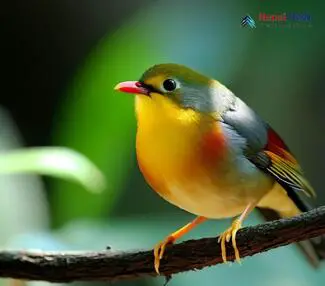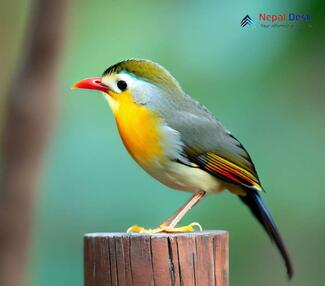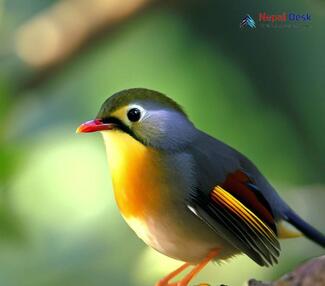The red-billed leiothrix (Leiothrix lutea) is a stunning small bird that belongs to the Leiothrichidae family. Known for their vibrant colors, these native Himalayan birds manage to draw birdwatchers and wildlife lovers from across the globe. In this piece of article, we'll delve into the red-billed leiothrix's taxonomy, physical attributes, habitat, diet, and prevalence in Nepal.
Taxonomy and Physical Features
Nestled within the Passeriformes order and Leiothrichidae family is the mesmerizing species of Leiothrix lutea. Boasting two accepted subspecies - Leiothrix lutea lutea and Leiothrix lutea kumaiensis - they both share enchanting features despite slight variations in geographic distribution and appearance.
Renowned for their brilliant hues and unique traits, red-billed leiothrixes are truly unforgettable. These tiny creatures measure about 15 cm long and exhibit sexual monomorphism – meaning both genders have similar looks. Their feathers are primarily olive-green combined with a yellow throat, orange chest, and deep red wing patches. Sporting a long graduated tail and a distinctively crimson beak - which earned them their name - these birds' beauty is unparalleled.
Habitat and Diet
Thriving at elevations between 600m and 3,700m above sea level, the red-billed leiothrix calls subtropical montane forests home. They favor dense bamboo undergrowth and moss-laden branches that facilitate evading predators. In Nepal itself, these birds are frequent sightings in the Himalayan foothills and highlands – including locations such as the Annapurna Conservation Area and Langtang National Park.
As omnivores, red-billed leiothrixes mainly feed on insects, larvae, and tiny invertebrates. However, fruits, berries, and nectar also form part of their diet when available. Their diverse food intake enables them to live in various environments while simultaneously meeting their nutritional requirements.
Presence in Nepal
Nepal's rich array of wildlife offers the perfect haven for numerous bird species – including the red-billed leiothrix. Owing to suitable habitats and conservation initiatives, their numbers have risen in recent years. As a result, avid birdwatchers often embark on guided tours through national parks and other crucial birding sites with the hopes of spotting these vivid creatures.
To sum it up, the red-billed leiothrix (Leiothrix lutea) is nothing short of captivating – due to its eye-catching appearance as well as its fascinating ecological role. Mostly found within Nepal's subtropical montane forests amongst bamboo thickets and moss-covered hideouts, these birds bring a touch of color to their surroundings. Ensuring the survival and continued presence of these beautiful feathered beings is crucial for maintaining Nepal's diverse wildlife legacy for future generations to appreciate.




